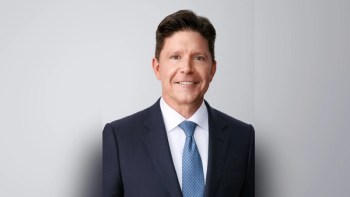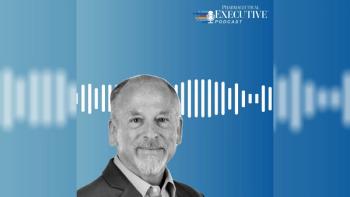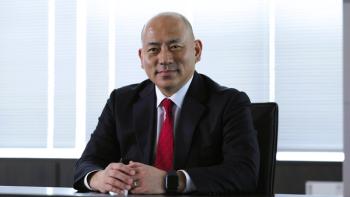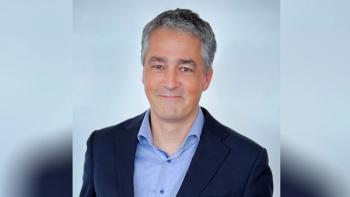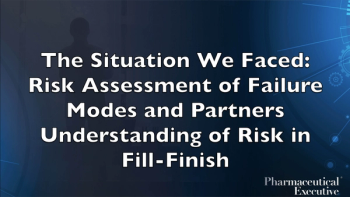
- Pharmaceutical Executive-06-01-2020
- Volume 40
- Issue 6
Rare Insights: Arndt Rolfs, CENTOGENE
Pharm Exec speaks with Arndt Rolfs, CEO and founder of CENTOGENE, who discusses his company’s rise from a small genetic diagnostics startup to a global organization focused on advancing the understanding of the pathophysiology of rare hereditary diseases.
Neurologist Dr. Arndt Rolfs, CEO and founder of CENTOGENE, discusses how he grew the genetic diagnostics company from small startup to a global organization focused on advancing the understanding of the pathophysiology of rare hereditary diseases to inform future drug development
CENTOGENE, headquartered in Rostock, Germany, is a rare disease company focused on transforming clinical, genetic, and biochemical data into medical solutions for patients. With operations also in Berlin, Germany, and Cambridge, MA, the company is guided on the principle that a detailed, global understanding of the genetic basis and the clinical phenotype of rare hereditary diseases will unlock the ability to target rare diseases and provide critical knowledge that will facilitate orphan drug development.
The company’s data repository, said to be the world’s largest repository for genetic information on rare hereditary diseases, combines clinical data and phenotype, genotype, proteomics, and metabolomics data to
aid in the development of new treatments.
CENTOGENE was founded in 2006 by Dr. Arndt Rolfs, a neurologist with long clinical experience in rare hereditary diseases. Rolfs received his official license to practice medicine from the Universities of Mainz and Vienna in 1985 and was granted a tenure track professorship for clinical neurology in 1997. He worked at the Department of Neurology and served as head of the Laboratory for Neurochemistry at the Free University of Berlin, at the Max Planck Institute for Molecular Genetics, and at the psychiatric clinic of the University Hospital Rudolf-Virchow in Berlin.
Since 1998, he has been the head of the neurobiological research laboratory and vice director of the neurological clinic and outpatients department at the University of Rostock. In 2008, Rolfs was appointed director of the Albrecht-Kossel-Institute for Neuroregeneration at the University of Rostock. He has an extensive track record in medical and scientific publications and acts as a consultant for international biotech and industrial companies.
Taking time out from his busy schedule, Rolfs sat down with Pharm Exec recently to talk about how he grew CENTOGENE from small startup to a worldwide company with nearly 500 employees, and his vision for the treatment of rare hereditary diseases going forward.
PE: After a long and distinguished career in medicine and academia, what prompted you to found CENTOGENE in 2006?
Rolfs:
I’ve spent 30 years in molecular medicine; I'm a neurologist, a neurogeneticist and a psychiatrist, and I guess it has to do with a characteristic of neurologists - we don’t have those detailed and comprehensive therapeutic topics, for example, like our colleagues in oncology or internal medicine have. We are somewhat hampered by the complexity of the brain. But in the last couple of decades, we have become very well educated about the molecular insights into the pathophysiology of these diseases and about how we can diagnose those. I have a strong background in the clinical understanding of rare hereditary diseases. I was active for several years in the Max Planck Institute for Molecular Genetics, where most likely the first PCR (polymerase chain reaction) and non-radioactive sequencing in Europe was implemented. With that technical experience, I founded my first two biotech companies in 2000. To cut a long story short, it was too early to open a biotech in Europe; at that time some of the regulatory and governance topics had not been properly addressed. But it was part of the learning curve and, based on that experience, I went on to found CENTOGENE in 2006. I went about starting CENTOGENE in a completely different way. I decided not to bring any investors on board; I wanted to carry my own weight and rely on my own expertise and my knowledge to develop the company and create solutions for the rare disease challenges to come.
PE: What sort of trajectory has the company had? Is it something that took off quickly or has it been a longer process to get where you are today?
Rolfs: You can always do things faster, but for us it has been a stepwise process. With rare hereditary diseases, you cannot focus on a small geographical area, on one country or one continent, because the epidemiology, the clinical manifestation, the genetics, the ethnicity, and the diseases themselves are completely different. Because we are sometimes talking about ultra-rare diseases, with perhaps just over 50 patients globally in some cases, it’s clear that whatever you do in that environment has to be a global activity from the outset, and has to be based on a global understanding of the complexity of the data.
Pharma companies are very interested in orphan drugs, of course, but they can sometimes find it challenging to understand the details of the clinical picture of those rare diseases. What, for example, is the natural history of the disease? What mutations, and what genetic defects are driving the disease? It’s about getting access to the data, collecting the data, and standardizing the documentation. We have more than a million patients in our registry, with each piece of data pseudonymized for data security - so how do you standardize the documentation? You have to solve one problem at a time.
During the first phase of the company, the first six to seven years, we were constantly trying to find a solution to the next challenge. In the second phase, we took all of that expertise and knowledge, those new solutions, to our pharma partners. Now we are moving into the third phase, where we have what is probably the largest data bank in the world focused on rare hereditary diseases. The question now is: How can we create the biggest impact from those huge data sets? What additional information can we get out of the exome or the genome? How do we get more basic science information out of the existing data?
PE: What for you were the leadership challenges of growing the company?
Rolfs: For me, leadership means that you have to really live for what you are doing. There is no compromise. But, of course, it’s always a team effort; success is based on having good team interaction. CENTOGENE is a highly interdisciplinary company. From an outside perspective, it may look like we are primarily focused on diagnostics, but actually, from the outset, CENTOGENE has been an IT-based company. Bioinformatics, big data, and AI are generating vast amounts of knowledge on one side; and on the clinical environment side, we are comstantly pushing to generate deeper insights into understanding of the pathophysiology of the different diseases. So, these characteristics-leadership, teamwork, a thirst for the topic, a highly interdisciplinary and international structure-have all contributed to turning the company into a success story.
From the very beginning, we have tried to recruit very international colleagues. Bioinformaticians, applied IT specialists, human geneticists, biotechnologists, AI experts-these are super-specialist roles. It’s clear you can’t just focus on the German market or the European markets. About 70% of our colleagues come from outside Europe; we now have more than 50 different nationalities on board. At first, identifying and hiring the right people was definitely a challenge, but the simple answer is the more successful you are, the easier it becomes. We are proud of our success, as we started with two colleagues and now we have just under 500 people in the company.
PE: With increasing amounts of AI power being deployed in the industry, are you developing your own AI systems and platforms? Is the technology moving quick enough for what you are trying to do?
Rolfs: A few years ago, we decided to use biomarker programs that we were running as proof-of-concepts with our AI technologies. We are using what we call a CentoCard®, which has made a significant contribution to the success of the company. It’s a simple piece of paper; but when you put a drop of blood on it and let it dry, the sample remains stable for at least 13 years. Because of the drying process, you can simply put it in an envelope and then ship it anywhere in the world. Unlike other blood sample solutions, it doesn’t require dry ice or a cooling device, which typically increases the transportation costs massively. But whenever you perform mass spectrometry on the blood sample, you are generating a huge spectrum of different peaks, typically 150,000 to 250,000 peaks per run. Very quickly that small sample of blood from an individual can generate between 12 to 14 terabytes of data. To best interpret this amount of data, we use AI, which can tell us if the pattern of the marker is parallel over time or in the disease. That AI is a combination of what is already available in the market-because there is no need to reinvent the wheel if it has already been developed- and the core expertise of our own AI team.
PE: What does the next five years hold for Centogene?
Rolfs: As an industry, we can lose approximately 10 to 11 years from the first proof-of-concept experiments to the time when a drug is finally released into the market. That time period is something we truly believe that we can expedite using the knowledge that we are generating on approximately 5,500 different rare diseases.
Now, we continue to further position CENTOGENE as a direct partner to pharmaceutical companies, to allow them to accelerate the development of new drugs. And how can we do that? Because we are so close to patients, we have a detailed understanding, like a fingerprint, of patients worldwide, with the knowledge gained from genomics, proteomics, and metabolomics.
We’re running huge prospective longitudinal studies with more than 22,000 patients globally in order to get a better understanding of growth trends, and to validate our new biomarkers. These are generating deep insights into the public physiology of different diseases, which also enables us to start supplementary programs for treatment development in specific indications.
In the next five years, I would like to see CENTOGENE offering a holistic solution under the rare-disease umbrella. This has to start with a detailed understanding of the patients, and the individual disease. It then moves into an understanding of how the disease is changing over time and combines all the knowledge and expertise together. Ideally, we then end up with the development of new drugs and new treatment concepts, which we could then develop further with our pharmaceutical partners.
Julian Upton is Pharm Exec’s European and Online Editor. He can be reached at
Articles in this issue
over 5 years ago
Pharm Exec's Top 50 Companies 2020over 5 years ago
Better ESG Communication with Investorsover 5 years ago
Will the Biopharma Leaders Please Take the Stage!over 5 years ago
Delivering Hope in a Pandemicover 5 years ago
The Specter of Compulsory Licensing Haunts Vaccine Debateover 5 years ago
Pivotal Moments: How Leaders Can Prepare for the Unexpectedover 5 years ago
How to Thank a Physician Post-COVID-19over 5 years ago
Spotlight on Science Gives Public New Perspectiveover 5 years ago
FDA’s Emergency Use Process Under ScrutinyNewsletter
Lead with insight with the Pharmaceutical Executive newsletter, featuring strategic analysis, leadership trends, and market intelligence for biopharma decision-makers.

